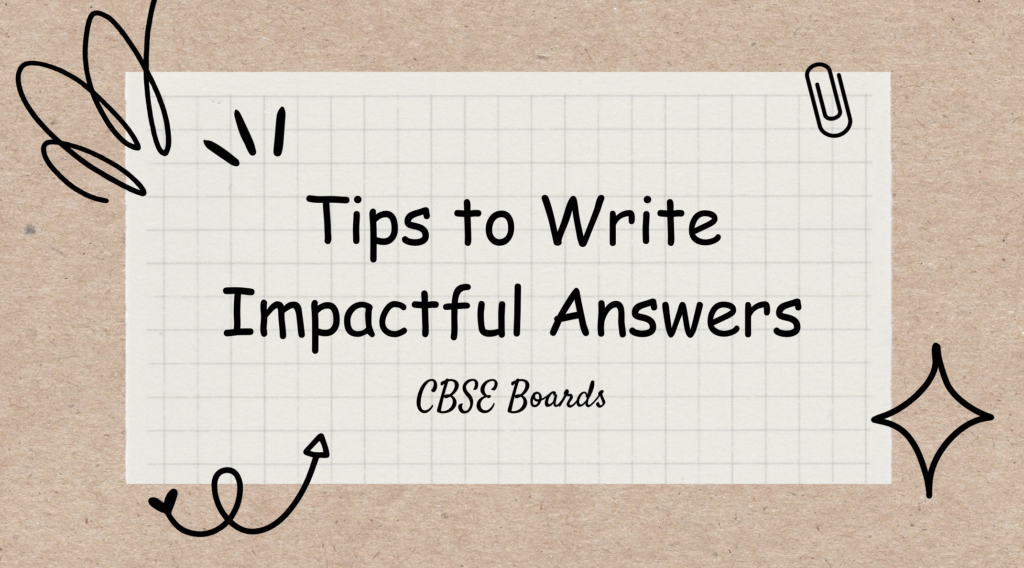CBSE Class 12 Exam 2022: Important Topics for Exam
CBSE Important Topics: The upcoming Central Board of Secondary Exams (CBSE) will commence the CBSE class 12 term 2 exams on April 26, 2022. Students are required to cover the entire syllabus to score good marks, however, knowledge of CBSE important topics will prove to be extremely beneficial to perform better. In this blog, students can find CBSE important topics to stay ahead of the competition.
A student’s performance in the CBSE term 2 and term 1 exams combined will make for the CBSE Class 12th final result. The CBSE term 2 exams will be conducted in a subjective manner.
CBSE 12th Physics Important Topics
Chapter 1 – Electrostatics: Coulomb’s Law of Vector, Forces between multiple charges electric field due to system of charges, Electric dipole in the external electric field, Electric dipole’s electric field on the axial and equatorial point, Gauss’s law of applications
Chapter 2 – Electrostatic Potential and Capacitance: Equipotential surfaces, Potential due to electric dipole and system of charges, Electric potential energy due to electric dipole and system of charges, Effect of dielectric on capacitors, Energy stored in capacitors, Combinations of capacitors
Chapter 3: Current Electricity: Ohm’s Law, Limitations of ohm’s law, Combination of resistors, Combination of cells, The resistivity of different materials, Meter bridge, Kirchhoff’s law (Definitions and Numericals), Potentiometer (Numericals are expected in 2022 board exams)
Chapter 4: Moving Charges and Magnetism: Motion in a magnetic field, Magnetic force on current-carrying wire (Theory and Derivation), Magnetic-field on the axis of the circular current-carrying loop, Cyclotron (Diagram, Theory and Derivation), Velocity selector, The force between two parallel current-carrying wires, Ampere’s circuital law, Torque on current-carrying loop in a magnetic field, Moving coil galvanometer
Chapter 5: Magnetism and Matter: Electric dipole in a uniform magnetic field, The axial magnetic field of a bar magnet as a solenoid, Hysteresis Loop, Diamagnetic, Paramagnetic, Ferromagnetic Substances,
Chapter 6: Electromagnetic Induction: Lens law, Magnetic flux, Motional EMF, Faraday’s law of induction, Self-inductance and mutual inductance
Chapter 7: Alternating Current: RC, LC, LR and LCR Circuits (Numericals and Derivation), LC oscillations (Numericals and Derivation), Power factor, Transformers, Resonance and Sharpness
Chapter 8 – Electromagnetic Waves: EM waves, Displacement Current, Nature of EM waves
Chapter 9 – Ray Optics and Optical Instruments: Image formation by spherical mirrors, Image formation by spherical lenses, Power and combination of lenses, Total internal reflection, Natural phenomenon due to light (Definition and Numericals), Refraction through a Prism (Ray diagram, Numericals and Derivation), Eye, Microscope and Telescope
Chapter 10 – Wave optics: Incoherent and coherent waves addition, Reflection and refraction of plane waves using Huygen principle, Interference and Young’s double-slit experiment, Diffraction of light, Polarisation by scattering, Resolving power of optical Instruments
Chapter 11 – Dual Nature of Radiation and Matter: Photoelectric effect, de Broglie hypothesis, Davisson and Germer experiment, Einstein photoelectric equation
Chapter 12 – Atoms: Atomic spectra, Electron Orbits, de-Broglie explanation of Bohr’s postulate, Bohr Model of a Hydrogen atom, Line spectra of a Hydrogen atom
Chapter 13: Nuclei: Nuclear binding energy (Definition and Numericals), Radioactivity, Radioactive decays
Chapter 14: Semiconductor Electronics: Materials, Devices and Simple Circuits: Intrinsic semiconductors, Extrinsic semiconductors, p-n Junction diode, p-n Junction in reverse bias and forward bias, n-p-n and p-n-p transistor, Junction diode as a rectifier, Zener diode as a voltage regulator, Transistor as an amplifier, Logic gates
Chapter 15: Communication Systems: Elements of communication system, Propagation of em waves, Basic terminologies of electronic communication system, Amplitude modulation
Important books for CBSE Class 12:
- NCERT Solutions for Maths
- NCERT Solutions for Physics
- NCERT Solutions for Chemistry
- NCERT Solutions for Biology
CBSE 12th Chemistry Important Topics
Chapter: Electrochemistry: Redox reactions, Conductance in electrolytic solutions, Specific and molar conductivity, Variations of conductivity with concentration, Kohlrausch's Law, Electrolysis and law of electrolysis, Dry cell-electrolytic cells and Galvanic cells, Lead accumulator, EMF of a cell, Standard electrode potential, Nernst equation and its application to chemical cells, Relation between Gibbs energy change and emf of a cell, Fuel cells, Corrosion,
Chapter: Chemical Kinetics: Rate of a reaction, Factors affecting rate of reaction: concentration, temperature, catalyst, Conceptual questions are expected, order and molecularity of a reaction, Rate law and specific rate constant, integrated rate equations and half-life, Concept of collision theory, the activation energy, Arrhenius equation,
Chapter: Surface Chemistry: Adsorption – physisorption and chemisorption, Factors affecting adsorption of gases on solids, Conceptual questions are expected, Catalysis, Homogenous and heterogeneous activity and selectivity, Enzyme catalysis colloidal state distinction between true solutions, Colloids and suspension, Lyophilic, lyophobic multi-molecular and macromolecular colloids, Properties of colloids, Tyndall effect, Brownian movement, Electrophoresis, Coagulation, Emulsion – types of emulsions,
Chapter: d and f Block Elements: Electronic configuration, occurrence and characteristics of transition metals, general trends in properties of the first-row transition metals – metallic character, ionization enthalpy, oxidation states, ionic radii, catalytic property, magnetic properties, interstitial compounds, alloy formation, preparation and properties of K2Cr2O7 and KMnO4, Lanthanoids – Electronic configuration, Oxidation states, Chemical reactivity and lanthanoid contraction and its consequences; Actinoids – Electronic configuration, oxidation states and comparison with lanthanoids
Chapter: Coordination Compounds: Ligands, Coordination number, colour, magnetic properties and shapes, IUPAC nomenclature of mononuclear coordination compounds, Bonding, Werner's theory, VBT, CFT, Structure and stereoisomerism,
Chapter: Aldehydes, Ketones and Carboxylic Acids: Aldehydes and Ketones: Nomenclature, nature of carbonyl group, methods of preparation, Physical and chemical properties, Mechanism of Nucleophilic addition, Reactivity of alpha hydrogen in Aldehydes: Uses, Carboxylic Acids: Nomenclature Acidic nature, Methods of preparation, Physical and chemical properties, Uses
Chapter: Organic compounds containing Nitrogen Amines: Nomenclature, Classification, Structure, Methods of preparation, Physical and chemical properties, Uses, Identification of primary, secondary and tertiary amines
CBSE 12th Maths Important Topics
Chapter 1 – Relations and Functions: Types of Relations, Composition of Two Functions, Invertible Functions
Chapter 2 – Inverse Trigonometric Functions: Properties of Inverse Trigonometric Functions
Chapter 3 – Matrices: Multiplication of Matrices and Related Properties, Symmetric and Skew Symmetric Matrices, Finding Inverse of a Matrix Using Elementary Transformations
Chapter 4 – Determinants: Properties of Determinants, Adjoint and Inverse of a Matrix, Solution of System of Linear Equations
Chapter 5 – Continuity and Differentiability: Continuity of a Function, Logarithmic Differentiation, Differentiation of Functions in Parametric Form, Second Order Derivatives
Chapter 6 – Application of Derivatives: Rate of Change of Quantities, Increasing and Decreasing Functions, Tangents and Normals to Curves, First and Second Derivative Tests for Finding Points of Local Maxima and Minima
Chapter 7 – Integrals: Integration by the Method of Substitution, Integration by the Method of Partial Fractions, Integration by Parts, Definite Integral as Limit of a Sum, Properties of Definite Integrals
Chapter 8 – Application of Integrals: Area under Simple Curves, Area Bounded by a Curve and a Line, Area Bounded by Two Curves
Chapter 9 – Differential Equations: Formation of Differential Equations, Method of Solving Differential Equations with Variable Separable, Homogeneous Differential Equations, Linear Differential Equations
Chapter 10 – Vector Algebra: Scalar Product of Vectors and Projection of Vector on a Line, Vector Product of Vectors
Chapter 11 – Three Dimensional Geometry: Direction Cosines and Direction Ratios of Line, Equation of a Line, Coplanarity of Lines, Angle between Two Lines, Shortest Distance between Two Skew Lines, Equation of a Plane in Normal Form, Equation of Plane Perpendicular to Given Vector and Passing through a Given Point, Equation of Plane Passing through Three Noncollinear Points, Plane Passing through the Intersection of Two Planes, Angle between Two Planes, Distance of a Point from a Plane, Angle between a Line and a Plane
Chapter 12 – Linear Programming: Graphical Solution of Linear Programming Problems
Chapter 13 – Probability: Multiplication Theorem on Probability, Independent Events, Bayes’ Theorem, Random Variable and Its Probability Distribution, Mean and Variance of Random Variable, Binomial Distribution
CBSE 12th Biology Important Topics
Chapter 1: Reproduction in Organisms: Modes of reproduction – asexual reproduction & sexual reproduction, Asexual reproduction – binary fission, sporulation budding, gemmule formation, fragmentation, vegetative propagation in plants
Chapter 2: Sexual Reproduction in Flowering Plants: Flower structure, Development of male and female gametophytes, Pollination-types, agencies and examples, Outbreeding devices, Double fertilization, Post fertilization events, Development of seed and formation of fruit, Special modes-apomixis, parthenocarpy, polyembryony, Significance of seed dispersal and fruit formation
Chapter 3: Human Reproduction: Male and female reproductive systems, Microscopic anatomy of testis and ovary, Gametogenesis-spermatogenesis & oogenesis, Menstrual cycle, Pregnancy and placenta formation, Parturition, Lactation
Chapter 4: Reproductive Health: Need for reproductive health and prevention of sexually transmitted diseases (STDs), Birth control – need and methods, Contraception and medical termination of pregnancy (MTP), Amniocentesis, Infertility and assisted reproductive technologies – IVF, ZIFT, GIFT
Chapter 5: Principles of Inheritance and Variation: Heredity and Variation, Deviations from Mendelism, Elementary idea of polygenic inheritance, Chromosome theory of inheritance, Chromosomes and genes, Sex determination – in humans, birds, honey bee, Linkage and crossing over, Sex-linked inheritance, Mendelian disorder in humans, Chromosomal disorders in humans, Down's syndrome, Turner's and Klinefelter's syndromes.
Chapter 6: Molecular Basis of Inheritance: Search for genetic material and DNA as genetic material, Structure of DNA and RNA, DNA packaging & DNA replication, Central dogma transcription, genetic code, translation, Gene expression and regulation – lac operon, Genome and human and rice genome project, DNA fingerprinting
Chapter 7: Evolution: Biological evolution and evidences for biological evolution, Darwin's contribution, Modern synthetic theory of evolution, Mechanism of evolution, Types of natural selection, Gene flow and genetic drift, Hardy – Weinberg's principle, Adaptive Radiation, Human evolution
Chapter 8: Human Health and Disease: Pathogens, parasites causing human diseases and their control, Basic concepts of immunology – vaccines: cancer, HIV and AIDs, Adolescene, Drug and alcohol abuse,
Chapter 9: Strategies for Enhancement in Food Production: Improvement in food production, Plant breeding, Tissue culture, Single cell protein, Biofortification, Apiculature and Animal husbandry
Chapter 10: Microbes in Human Welfare: Household food processing, Industrial production, Sewage treatment, Energy generation and microbes as biocontrol agents and biofertilizers, Antibiotics – production and judicious use
Chapter 11: Biotechnology: Principles and Processes, Genetic engineering (Recombinant DNA technology)
Chapter 12: Biotechnology and its Applications: Application of biotechnology in health and agriculture, Human insulin and vaccine production, Stem cell technology, Gene therapy, Genetically modified organisms – BT crops; transgenic Animals; Biosafety issues, biopiracy and patents
Chapter 13: Organisms and Populations: Organisms and environment, Habitat and niche, Population and ecological adaptations, Population interactions-mutualism, competition, predation, parasitism, Population attributes – growth, birth rate and death rate, age distribution
Chapter 14: Ecosystem: Ecosystems: Patterns, components, Productivity and decomposition, Energy flow; pyramids of number, biomass, energy, Nutrient cycles (carbon and phosphorous), Ecological succession, Ecological services – carbon fixation, pollination, seed dispersal, oxygen release
Chapter 15: Biodiversity and Conservation: Concept of biodiversity, Patterns of biodiversity, Biodiversity conservation, Hotspots, Endangered organisms, Red Data Book, Biosphere reserves, national parks, sanctuaries and Ramsar sites
Chapter 16: Environmental Issues: Air pollution and its control, Water pollution and its control, Agrochemicals and their effects, Solid waste management, Radioactive waste management, Greenhouse effect and climate change, Ozone layer depletion
Some Important Concepts for Class 12:
- Dichloromethane
- Embryo Sac
- Exnor Gate
- Bernoulli trials and binomial distribution
- Structure Of Ovule And Its Types
CBSE Important Topics – Frequently Asked Questions
Question: What are the CBSE 12th physics important topics?
Answer: The most important topics for Physics Class 12 are mentioned on this page. Students looking forward to appearing for CBSE Class 12 exams terms 2 can refer to CBSE 12th physics important topics here.
Question: Name some CBSE 12th Chemistry important topics?
Answer: The high weightage topics of CBSE 12th Chemistry are mentioned on this page. Make sure to prepare CBSE 12th Chemistry important topics to score good marks in Chemistry.
Question: What are CBSE 12th maths important topics?
Answer: The most important topics for Math Class 12 are mentioned on this page. Students looking forward to appearing for CBSE Class 12 exams term 2 can refer to CBSE 12th Maths important topics here.
Question: Name some CBSE 12th Biology important topics?
Answer: The high weightage topics of CBSE 12th Biology are mentioned on this page. Make sure to prepare CBSE 12th Biology important topics to score good marks in Biology.
Further readings –
- Karnataka SSLC Exams Starts, Know exam day guidelines here
- Kerala SSLC Exam from March 31, Check Exam Dates here
- JEE Main 2022 and List of Other Engineering Exams to Apply



